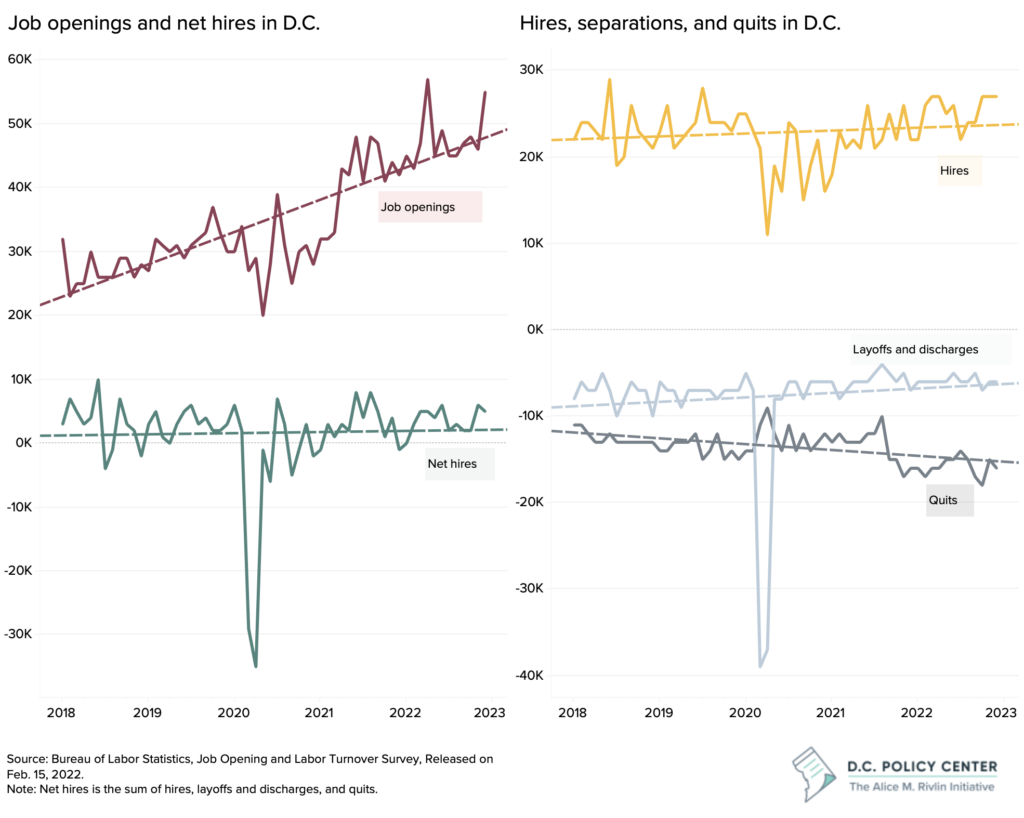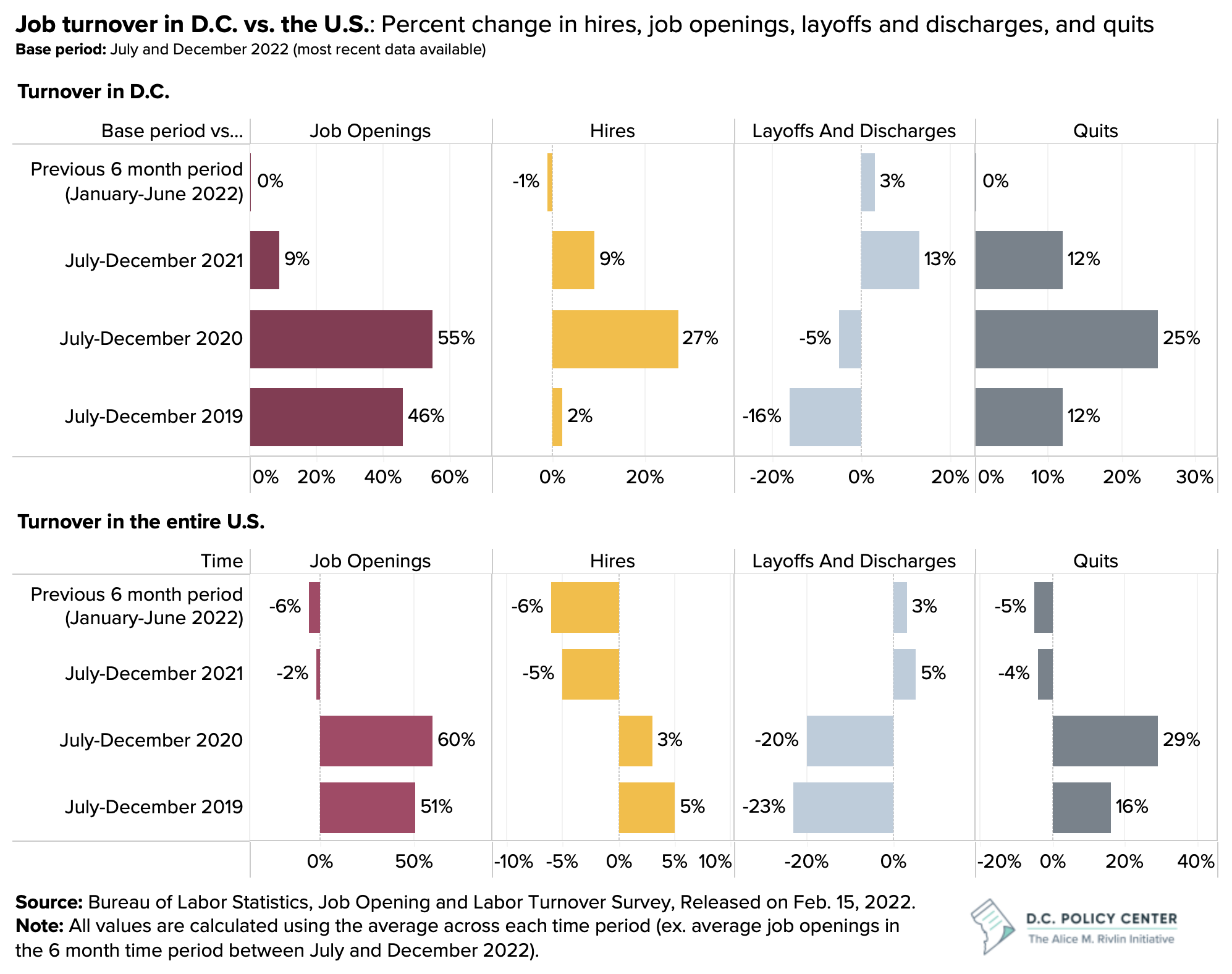Layoffs in both D.C. and the entire U.S were up in the second half of 2022 compared to earlier in the year. However, layoffs remain below pre-pandemic levels. And, in D.C., hiring continues to lag historically high levels of job postings.
Many large employers, particularly those in the tech industry, have announced large job cuts. In fact, it is estimated that in January 2023, U.S.-based employers cut the most jobs since September 2020.[i] This has led to concerns about a recession and potential spillover effects into service industries that are still struggling to recover from the pandemic’s impact. This week, we look at how job turnover in D.C. compares to national trends.
Layoffs and discharges
In the last half of 2022, layoffs and discharges were up by 3 percent in both D.C. and the entire U.S. compared to the first half of 2022. But, compared to pre-pandemic, employers are laying off employees at lower rates.
- Our take: The uptick in layoffs is relative to earlier in the pandemic, not pre-pandemic. In the case of tech companies, it is possible they increased hiring during the pandemic when everyone was online and demand for their services was high. Now, these companies may be peeling back as demand for services have shifted. This theory would explain why layoffs remain below pre-pandemic levels.
Quits
Compared to early pandemic, the quit rate is beginning to slowdown in D.C. and the U.S., but remains above pre-pandemic levels.
- Our take: Quits are still above pre-pandemic levels, but are slowing down. With inflation and more opportunities for benefits, such as remote work, employers may struggle to retain employees. If quit rates decline and layoffs increase, some of this pressure will be lifted from employers.
Job openings
In D.C., the level of job postings was stable between the first and second half of 2022, and the rate of new postings is slowing down relative to earlier in the pandemic. Still, the city is seeing historically high levels of demand for new workers with job postings up 46 percent in the six-month period between July and December 2022 compared to the same period in 2019. Meanwhile, the rate of job postings in the U.S. also remains above pre-pandemic levels, but has begun to decline relative to earlier in the pandemic.
- Our take: This could mean 1) the U.S. has recovered jobs lost during the pandemic faster than D.C. and demand for workers has slowed down or 2) D.C. businesses are faring well due to higher demand for services (or expect to do so in the future).
Hires
Employers are hiring above pre-pandemic levels in both D.C. and the entire U.S. But, in the second half of 2022, hiring in D.C. dropped compared to the first half of the year. This is despite no change in job postings. Nationwide, hiring also dropped in the second half of 2022 compared to the first half of the year. But, this was paired with a similar drop in job postings.
- Our take: Similarly to when we last looked at job turnover data, job openings have been consistently above hires. And, as seen by the graph below, the level of job postings is trending upward while net hires has remained fairly stable. This indicates employers are having a hard time filling position, or that people are not interested in working in D.C.
The data do not capture 2023 job cuts. But, in D.C., job postings have remained stable despite a slight increase in layoffs. This implies that employers are still in need of workers, whether that be because businesses are continuing to recover from pandemic impacts or because they foresee an increase in demand for their services. As of now, data does not show any recent hits to the D.C. job market. In December 2022, for every employee laid off, there were still 4.5 job postings.[ii] But, if layoffs continue to increase paired with a decline in job postings and a drop in hires, that would signal a potential a shift in the city’s job market.

Data notes
- All data levels referenced are an average across various 6 month periods (see main chart for details).
- All data are seasonally-adjusted.
[i] Josephs, Leslie (2023). “Covid’s ‘legacy of weirdness’: Layoffs spread, but some employers can’t hire fast enough.” CNBC.
[ii] The data cannot be broken down by industry, so this number is likely exaggerated.
